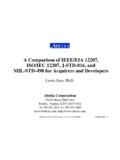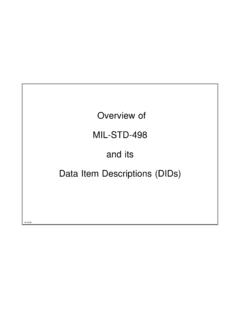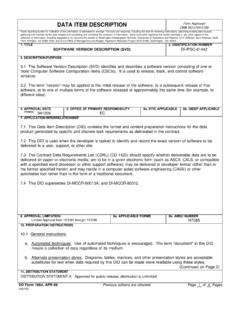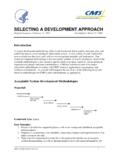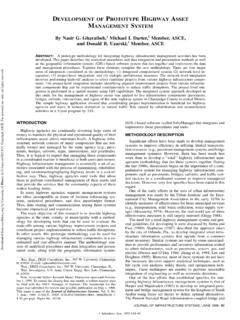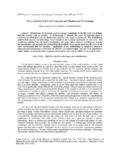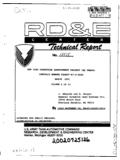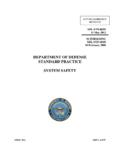Transcription of INTERNATIONAL STANDARD ISO/IEC 12207 …
1 1 INTERNATIONAL STANDARDISO/IEC 12207 SOFTWARE life cycle PROCESSESR aghu SinghFederal Aviation AdministrationWashington, DC, USA BACKGROUNDIn 1987 the INTERNATIONAL Organization for Standardization (ISO) and the INTERNATIONAL ElectrotechnicalCommission (IEC) established a Joint Technical Committee (JTC1) on Information Technology. Thescope of the JTC1 is "Standardization in the field of information technology systems (includingmicroprocessor systems) and equipments.
2 "In June 1989, the JTC1 initiated the development of an INTERNATIONAL STANDARD , ISO/IEC 12207 [1], onsoftware life cycle processes to fill a critical need. Since the "cottage" industry era of the late 1970's,software has been establishing itself as an integral part of many scientific and business disciplines. However, environments for developing and managing software have been proliferating for lack of auniform framework for managing and engineering software.
3 The INTERNATIONAL STANDARD fills that criticalneed by establishing a common framework that can be used by software practitioners to manage andengineer software. Besides, such a uniform framework would promote INTERNATIONAL trade in softwareproducts and INTERNATIONAL STANDARD was published August 1, 1995. The following countries participated in thedevelopment of the STANDARD : Australia, Brazil, Canada, Czech Republic, Denmark, Finland, France,Germany, Ireland, Italy, Japan, Korea, The Netherlands, Spain, Sweden, the United Kingdom, and theUnited States of STANDARD is voluntary; that is, it does not in itself impose any obligation upon anyone to follow it.
4 Yet,it may be imposed by an organization through internal policy directive or by individual parties throughcontractual agreements. The STANDARD is designed for use by one or more parties as the basis of anagreement or in a self-imposed way. BASIC CONCEPTSS oftware life cycle architecture. The STANDARD establishes a top-level architecture of the life cycle ofsoftware. The life cycle begins with an idea or a need that can be satisfied wholly or partly by softwareand ends with the retirement of the software.
5 The architecture is built with a set of processes andinterrelationships among these processes. The derivation of the processes is based upon two basicprinciples: modularity and The processes are modular; that is, they are maximally cohesive and minimallycoupled to the practical extent feasible. An individual process is dedicated to a unique A process is considered to be the responsibility of a party in the software lifecycle. In other words, each party has certain responsibilities.
6 Responsibility is one of the key principles oftotal quality management, as discussed later.) This is in contrast to a "text book approach," where the life2cycle functions could be studied as topics or subjects, such as management, design, measurement, qualitycontrol, life cycle processes. The processes are grouped into three broad classes: primary; supporting; andorganizational. See Figure 1 [2]. Primary processes are the prime movers in the life cycle ; they areacquisition, supply, development, operation, and maintenance.
7 Supporting processes are documentation,configuration management, quality assurance, joint review, audit, verification, validation, and problemresolution. A supporting process supports another process in performing a specialized function. Organizational processes are management, infrastructure, improvement, and training. An organization mayemploy an organizational process to establish, control, and improve a life cycle CYCLESUPPORTINGCONFIGURATION MANAGEMENTDOCUMENTATIONQUALITY ASSURANCEVERIFICATIONVALIDATIONJOINT REVIEWAUDITPROBLEM RESOLUTIONPRIMARYDEVELOPMENTOPERATIONMAI NTENANCEACQUISITIONSUPPLYORGANIZATIONALM ANAGEMENTINFRASTRUCTUREIMPROVEMENTTRAINI NGF igure 1.
8 The life cycle ProcessesThe structure of a life cycle process. Each process is further designed in terms of its own constituentactivities, each of which is further designed in terms of its constituent tasks. See Figure 2 [2]. An activityunder a process is a set of cohesive of tasks. A task is a set of elementary or atomic actions. A task consumes inputs (data,information, control) and produces outputs (data, information, control). It is expressed in the form of self-declaration, requirement, recommendation, or permissible action.
9 For this purpose, the STANDARD carefullyemploys certain auxiliary verbs (will, shall, should, and may) to differentiate between the distinct forms ofa task. "Will" is used to express a self-declaration of purpose or intent by one party, "shall" to express abinding provision between two or more parties, "should" to express a recommendation among otherpossibilities, and "may" to indicate a course of action permissible within the limits of the STANDARD . "Must,"which denotes a mandatory action, is never used in the 1 ACTIVITY NTASK 1 TASK NTASK.
10 Figure 2. The Structure of a ProcessThere are other actions that do not contain a "shall" or a "will." These actions are not requirements; theyare a preamble, an assumption, or statements that supplement or complement the of evaluations. In the STANDARD , evaluation is an elementary function and used in several mannersby the processes. Evaluations are conducted on various entities with given purposes against given criteria. An entity may be a process, an activity, or a task; a plan, an agreement, or a report; data, information, orproducts; or other.
